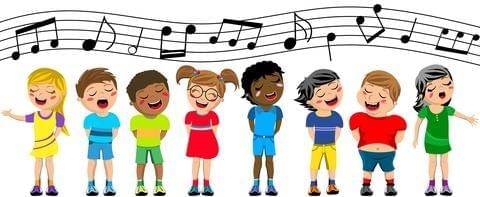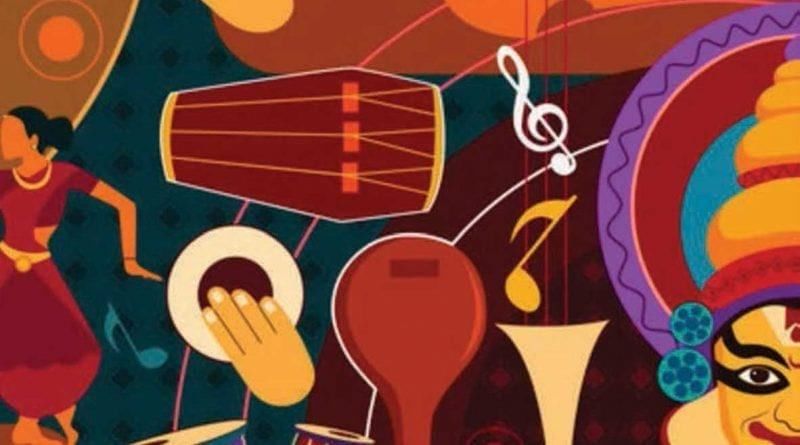Class 8 Exam > Class 8 Notes > Arts (Kriti) Class 8 - New NCERT > Chapter Notes: Discovering the Elements of Music
Discovering the Elements of Music Chapter Notes | Arts (Kriti) Class 8 - New NCERT PDF Download
| Table of contents |

|
| Introduction |

|
| Vocal Exercises |

|
| Tala, Konnakkol, and Swaras |

|
| Tabla Patterns in Hindustani Music |

|
| Patriotic Song - "Jayati Jayati Bharata Mata" |

|
Introduction
We explore the fundamental elements of music, which include melody (raga), rhythm (tala), and lyrics (sahitya). Music plays a vital role in our lives and is present in many forms across various cultures. By understanding the elements that form music, we can better appreciate its complexity and beauty. We will also learn about vocal exercises that help develop the voice, as well as the concept of harmony, rhythm, and the role of Sanskrit verses in understanding rhythm.
Vocal Exercises

Range
- Vocal range refers to the span from the lowest to the highest note you can comfortably sing.
- Exercising the vocal range helps develop your singing ability and extend your comfort zone.
- Practice mandra saptak to develop the lower register of your voice.
Flexibility
- Flexibility in the voice allows for smoother transitions between different pitches and notes.
- Vocal exercises such as "Sargam in Teentala" can help increase voice flexibility.
- Start slow and increase the tempo as your voice becomes comfortable with the patterns.
Harmony
- Harmony is the combination of different notes sung or played at the same time to produce a pleasant effect.
- Vocal exercises like singing in harmony, or playing duets, help in collaborative musical expression.
Sanskrit Verses and Rhythm
- Sanskrit verses are often recited in a rhythmic pattern, known as 'chhandas.'
- For example, the shloka "Omkaaram Bindu-Samyuktam" follows a rhythm pattern that can be clapped along to.
- This connection between rhythm and chanting helps us understand the musical element of rhythm in Sanskrit literature.
Tala, Konnakkol, and Swaras
Konnakkol in Adi Tala

- Konnakkol is a rhythm language used in Carnatic music.
- We learn to recite konnakkol patterns in various speeds: 1 count per beat, 2 counts per beat, and 4 counts per beat.
- Practicing these patterns helps develop a strong understanding of rhythm in music.
Swaras in Adi Tala

- In this exercise, we practice using swaras (musical notes) in different speeds to understand rhythm.
- Start with simple patterns and gradually increase the complexity by adding more swaras and faster tempos.
Tabla Patterns in Hindustani Music
- Tabla patterns such as Paran, Chakradhaar, Uthaan, Fard, and Palta are essential in Hindustani music.
- Each tabla pattern has its own rhythm structure, and practicing these will help you better understand the intricacies of rhythm in music.
Leading and Participating in an Ensemble
- In an ensemble, each member plays a unique role, contributing to the overall performance.
- Roles can include the conductor, lead singer, chorus singers, and instrumentalists.
- Working together in an ensemble helps develop coordination and collaboration skills in music.
Patriotic Song - "Jayati Jayati Bharata Mata"
- The patriotic song "Jayati Jayati Bharata Mata" celebrates the spirit of India.
- It highlights various aspects of India's rich culture, strength, and history.
- Learning such songs promotes unity and pride in one’s nation.
The document Discovering the Elements of Music Chapter Notes | Arts (Kriti) Class 8 - New NCERT is a part of the Class 8 Course Arts (Kriti) Class 8 - New NCERT.
All you need of Class 8 at this link: Class 8
|
76 docs|19 tests
|
FAQs on Discovering the Elements of Music Chapter Notes - Arts (Kriti) Class 8 - New NCERT
| 1. What are some effective vocal exercises for beginners in music? |  |
Ans. Effective vocal exercises for beginners include lip trills, humming on different pitches, and practicing scales. Lip trills help in relaxing the vocal cords while improving breath control. Humming allows singers to explore their range without straining their voices, and practicing scales can enhance pitch accuracy and vocal agility.
| 2. How does harmony function in music, particularly in ensemble settings? |  |
Ans. Harmony in music refers to the combination of different musical notes played or sung simultaneously to create a pleasing sound. In ensemble settings, harmony enhances the overall texture of the music, providing depth and richness. Musicians often use chords and counterpoints to create harmony, and understanding these concepts is essential for effective collaboration within the group.
| 3. What is the significance of Sanskrit verses in Indian classical music? |  |
Ans. Sanskrit verses hold significant cultural and historical importance in Indian classical music as they often embody philosophical and spiritual themes. These verses are frequently set to music, allowing for the expression of emotions and ideas through melody and rhythm. They also highlight the intricate relationship between language and music in tradition, enhancing the listener's experience.
| 4. Can you explain the concept of Tala and Konnakkol in Hindustani music? |  |
Ans. Tala is a rhythmic cycle in Hindustani music that organizes the beats within a composition. Konnakkol, on the other hand, is the vocal percussion technique used to articulate these rhythmic patterns. It involves speaking rhythmic syllables to demonstrate the tala, which aids musicians in internalizing complex rhythms and enhances their performance skills.
| 5. How can students effectively lead and participate in a music ensemble? |  |
Ans. Students can effectively lead and participate in a music ensemble by developing strong communication skills and understanding their role within the group. A good leader should guide rehearsals, set clear goals, and encourage collaboration. Participants should listen actively, be open to feedback, and practice regularly to contribute positively to the ensemble's overall performance.
Related Searches















